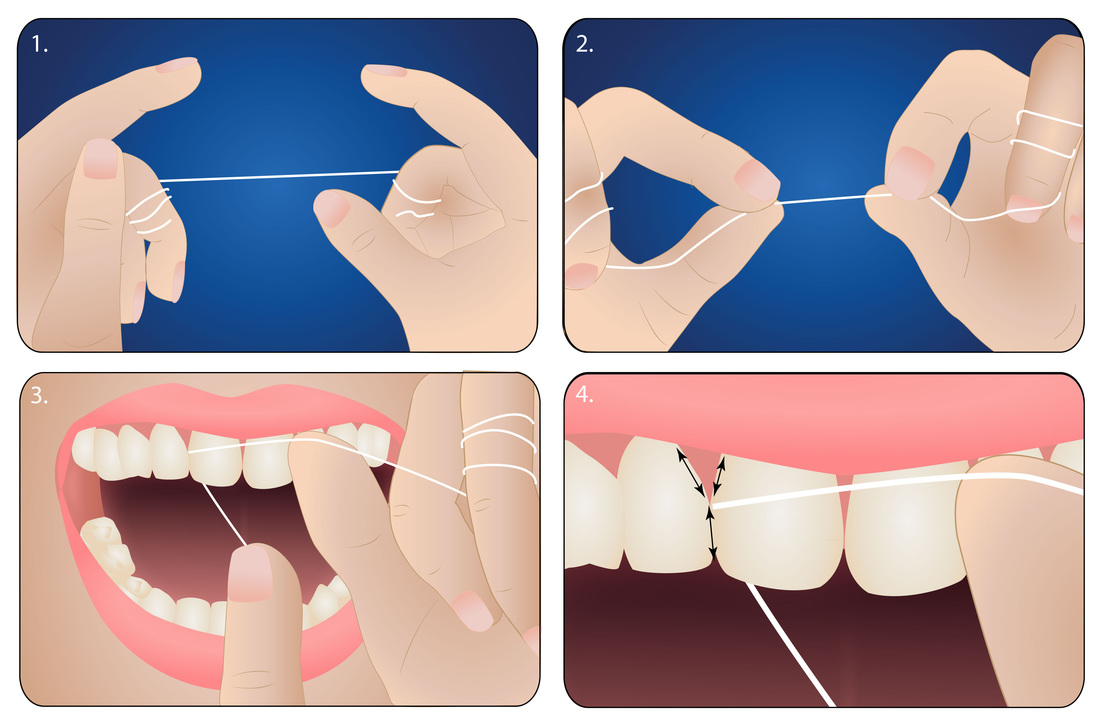Are you only cleaning 2/3rds of your teeth?
Each tooth has five surfaces: brushing only cleans three of these surfaces (the front, back, and biting surface) whereas flossing cleans the remaining two (the sides of the tooth adjacent to neighbouring teeth).
Each tooth has five surfaces: brushing only cleans three of these surfaces (the front, back, and biting surface) whereas flossing cleans the remaining two (the sides of the tooth adjacent to neighbouring teeth).
Floss is a string-like structure that helps remove acid-producing bacterial biofilm aka plaque from the sides of the tooth that are inaccessible by the bristles of your brush. The buildup of plaque can lead to cavities and also early gum inflammation aka gingivitis. If gingivitis is left untreated, periodontitis may occur causing destruction of gums and bone, leading to loosening of teeth.
The Do’s of flossing:
- Get a 15cm to 18cm (approx. elbow length) long piece of floss and wrap it around your fingers
- Use your index finger and thumb to manoeuvre the floss between your teeth to make a C-shape against one side of the tooth
- Move the floss up and down gently between the gum and the tooth
- Don’t forget to make a C-shape to adapt the floss on the neighbouring tooth
- Floss before you brush your teeth at least once a day

The Don’ts of flossing:
- Do not use a see-sawing motion (back-and-forth) to floss your gums. This will damage the edges of your gums.
- Do not stop flossing if you see bleeding. This bleeding means that your gums are inflamed from plaque buildup.
- Flossing cannot remove hardened dental plaque aka calculus
If you are having any problems with number 2 and 3, do make an appointment with your dentist or dental hygienist for a professional clean every 6 months and a comprehensive screening for periodontitis.
Reference:
- Website:
- Image:

